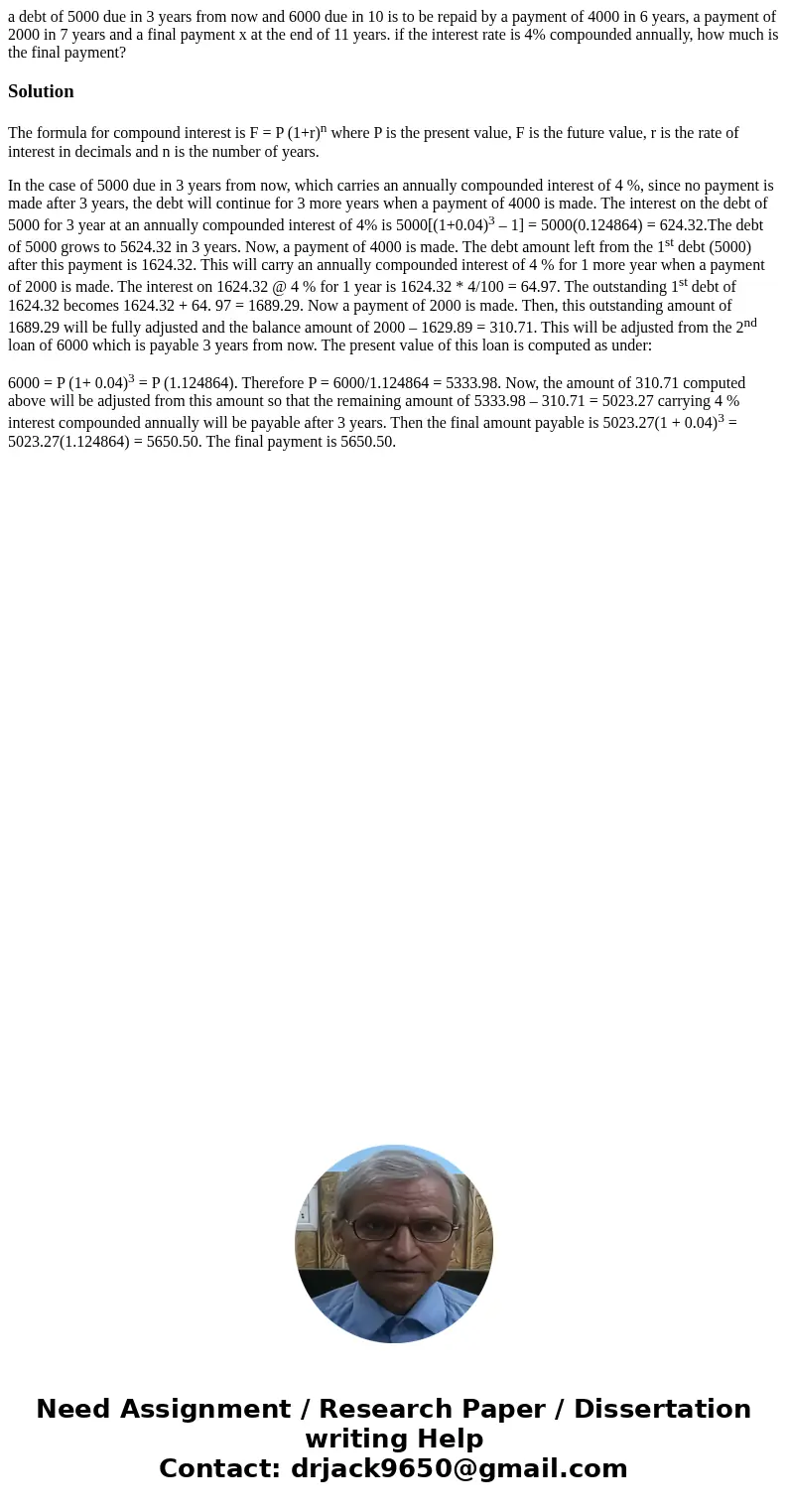a debt of 5000 due in 3 years from now and 6000 due in 10 is
a debt of 5000 due in 3 years from now and 6000 due in 10 is to be repaid by a payment of 4000 in 6 years, a payment of 2000 in 7 years and a final payment x at the end of 11 years. if the interest rate is 4% compounded annually, how much is the final payment?
Solution
The formula for compound interest is F = P (1+r)n where P is the present value, F is the future value, r is the rate of interest in decimals and n is the number of years.
In the case of 5000 due in 3 years from now, which carries an annually compounded interest of 4 %, since no payment is made after 3 years, the debt will continue for 3 more years when a payment of 4000 is made. The interest on the debt of 5000 for 3 year at an annually compounded interest of 4% is 5000[(1+0.04)3 – 1] = 5000(0.124864) = 624.32.The debt of 5000 grows to 5624.32 in 3 years. Now, a payment of 4000 is made. The debt amount left from the 1st debt (5000) after this payment is 1624.32. This will carry an annually compounded interest of 4 % for 1 more year when a payment of 2000 is made. The interest on 1624.32 @ 4 % for 1 year is 1624.32 * 4/100 = 64.97. The outstanding 1st debt of 1624.32 becomes 1624.32 + 64. 97 = 1689.29. Now a payment of 2000 is made. Then, this outstanding amount of 1689.29 will be fully adjusted and the balance amount of 2000 – 1629.89 = 310.71. This will be adjusted from the 2nd loan of 6000 which is payable 3 years from now. The present value of this loan is computed as under:
6000 = P (1+ 0.04)3 = P (1.124864). Therefore P = 6000/1.124864 = 5333.98. Now, the amount of 310.71 computed above will be adjusted from this amount so that the remaining amount of 5333.98 – 310.71 = 5023.27 carrying 4 % interest compounded annually will be payable after 3 years. Then the final amount payable is 5023.27(1 + 0.04)3 = 5023.27(1.124864) = 5650.50. The final payment is 5650.50.

 Homework Sourse
Homework Sourse